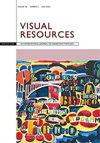Covid-19 Cartooning as Critique: An Analysis of Select Webcomics of Rachita Taneja and Satish Acharya
IF 0.1
0 ART
引用次数: 0
Abstract
For Indian citizens, 2020 was not just the year of a global pandemic. It was also the year that brought home the fact that the world's largest democracy is slowly but surely crumbling under the stewardship of a far-right government that has been stoking communal tensions, eroding civil rights and hollowing out the economy from within. The administration's handling of Covid-19 has been marked by a trademark mixture of cruelty and incompetence: announcing the world's strictest lockdown with no prior notice, resulting in a mass exodus of migrant workers forced to travel hundreds of kilometers on foot from cities to their villages; peddling fake science; vaccination mismanagement, etc. It has been aided in this process by the country's mainstream media that has largely abdicated its adversarial role of holding those in power accountable. Webcomics have stepped into this vacuum to critique the socio-political dimensions of the pandemic through satire, their caricatures shared far and wide on social media and private messaging apps. These webcomics, I argue, have taken up the mantle of editorial cartooning which Victor Navasky has theorised as both routinely trivialised and powerfully subversive. The social media trolling received by Acharya as well as a Supreme Court injunction issued to Taneja testifies to what Navasky calls the peculiarly incendiary power of caricature. In my paper, I offer close readings of the Covid-19 related digital cartoons of Satish Acharya and Rachita Taneja and analyse the ways in which they offer a counter-hegemonic narrative of the pandemic in India.新冠肺炎漫画批评:Rachita Taneja和Satish Acharya网络漫画选集分析
对印度公民来说,2020年不仅仅是全球大流行的一年。这一年也让人们意识到,这个世界上最大的民主国家正在一个极右翼政府的领导下缓慢但肯定地崩溃,这个政府一直在煽动社区紧张局势,侵蚀公民权利,并从内部掏空经济。本届政府对Covid-19的处理是残酷和无能的标志:在没有事先通知的情况下宣布了世界上最严格的封锁,导致大量农民工被迫从城市步行数百公里返回农村;兜售伪科学;疫苗接种管理不善等。在这个过程中,它得到了该国主流媒体的帮助,这些媒体在很大程度上放弃了追究当权者责任的对抗角色。网络漫画进入了这一真空,通过讽刺来批评疫情的社会政治层面,他们的漫画在社交媒体和私人通讯应用程序上广泛分享。我认为,这些网络漫画已经披上了编辑漫画的外衣,维克多·纳瓦斯基(Victor Navasky)将其理论化,认为它既例行化又具有强大的颠覆性。阿查里亚收到的社交媒体挑衅,以及最高法院发给塔内贾的禁令,都证明了纳瓦斯基所说的漫画具有独特的煽动性。在我的论文中,我仔细阅读了萨蒂什·阿查里亚(Satish Acharya)和拉奇塔·塔内贾(Rachita Taneja)与Covid-19相关的数字漫画,并分析了他们如何为印度的疫情提供反霸权叙事。
本文章由计算机程序翻译,如有差异,请以英文原文为准。
求助全文
约1分钟内获得全文
求助全文

 求助内容:
求助内容: 应助结果提醒方式:
应助结果提醒方式:


